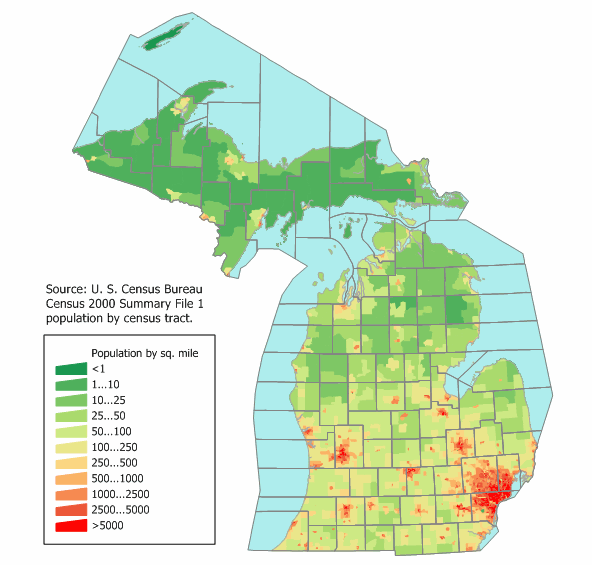Without a doubt, Bernie Sanders exceeded expectations in Michigan Tuesday. While he still fell further behind in the delegate count, his supporters are bullish on his future prospects — and more sure than ever that opinion polls are meaningless distractions. The win has rekindled hope that he can somehow overcome Hillary Clinton during the primaries. As I’ll explain, that would be an extremely difficult feat, no matter how much love Sanders gets from his supporters. It would require that Clinton simply collapse before our eyes.
Frankly, it’s shameful how many self-described ‘progressive’ people are so quick to reject the science of polling and celebrate its supposed downfall, or to proclaim that Sanders has some secret stealth power against polling science. While it is harder and more expensive to do good polls now because of cell phones, opinion polling remains the fundamental raw material of political science, not just political campaigning. Ignoring scientific data altogether is how Republicans deny climate change, impose abstinence-only ‘education,’ and insinuate other reality-defying policies into our everyday lives; the proper answer to right wing denialism is therefore not a mirror-image left-wing denialism born of enthusiasm, but a rational appreciation of the facts. Any other way leads to madness and idiocracy.
After all, Sanders did not get this far on just his rumpled charisma and his ambitious policies. He won states by setting aside his distrust of polling and data to embrace modern campaign techniques.
Although he has gained some momentum, Sanders nevertheless faces the stark reality of delegate math — in fact, he actually lost ground on Tuesday — and he has still not won a majority of Democratic ballots cast so far. That’s right: more than 4.9 million people have cast ballots for Hillary Clinton in Democratic contests; less than 3.3 million people have voted for Bernie. To make up the one gap, he will need to narrow the other as well.
With that in mind, here are four bubbly question marks within the Michigan polling picture that suggest Bernie Sanders still has a very narrow path to the nomination.
1. Michigan is an open-ballot state
Nate Silver admitted to a “gut feeling” beforehand that Sanders could beat expectations in Michigan for a variety of reasons. Michigan is actually notorious for polling upsets, and he specifically noted that Clinton voters could very well fall into complacency given her 20 point lead in opinion polls. That may have in fact happened.
Because Michigan is an open ballot state, some Democrats apparently did choose to participate in the Republican race with the objective of moderating the opposite party. According to David Weigel, there is strong evidence that Ohio Gov. John Kasich, who unexpectedly beat Sen. Marco Rubio for third place, did in fact get a last-minute boost from Democrats who “saw him as the best option for slowing down Trump and Cruz” — or, they thought they should give the weakest Republican a boost.
According to adjusted exit polls, 7 percent of Republican primary voters were Democrats, and 32 percent were independents — the latter group gave Kasich 27 percent of the vote. Trump and Kasich were tied, 37 percent to 37 percent, among voters who called themselves “moderates.”
Plenty of Democrats found themselves at Kasich rallies, or choosing Kasich in the polling booth. Pollsters who saw an easy Michigan victory for Hillary Clinton convinced some liberals to cast a stop-Trump vote instead. Kasich’s best performance came in Washtenaw County, home of Ann Arbor and the University of Michigan, and he overperformed in other college towns.
While Kasich did overperform, Donald Trump won by almost exactly the predicted margin. Real Clear Politics had him leading by 12 points, and yesterday he won by 11.6 percent. If the polls in Michigan were so entirely wrong that they did not measure public opinion with any accuracy at all — which is what many Sanders partisans are saying today — then Trump would not be within half a percentage point of his predicted margin of victory, either. And because Democratic ‘strategic voting’ was uncoordinated, they essentially threw away their votes.
By the way, Florida and Ohio are not open primaries like Michigan. Clinton has big polling leads in both states, so we’re going to see two good tests of this hypothesis. If she wins each contest by a number close to the expected margin, it strengthens the probability that Michigan was at least in part a fluke of ‘strategic voting.’
2. Sanders won white Democrats, improved marginally with blacks
Sanders’s range of appeal remains pretty narrow. The Huffington Post quotes a Michigan pollster:
[T]he biggest difference seems to be among white voters and gender,” he said in an email. “We had 49/48 Clinton among white voters compared to 42/57 in the exit polls. We had women at 59/36 versus 53/46 exit poll. We had men at 48/49 versus 44/54. So, it’s a little bit of everything.
Remember that, while Michigan has famously-black urban areas such as Flint, the demographics of the state are still much paler than southern states where Clinton consistently destroyed Sanders.
White voters represent a well-above-average share of the Democratic electorate in Michigan. Black voters, who have essentially been the difference for Mrs. Clinton in this campaign cycle, represent almost the exact same share of the electorate in Michigan as they do nationally.
Sure, the Democratic nominee wants to win over as many white voters as possible. But no Democrat is going to win without strong support among women and African Americans because they are key parts of the Democratic coalition. Indeed, if there is cause for celebration in the Sanders camp, this is it: they only lost 2-1 with black voters, and demographically, many of the upcoming states are more like Michigan than Mississippi. By the way, if you look at the election map, you can see rural — that is, whiter — electorates turned out for Sanders.
The Michigan and Mississippi maps tonight. Blue is Clinton, Green is Sanders https://t.co/joSFMiOTD4 pic.twitter.com/9BfV6j5Wts
— Brandon Wall (@Walldo) March 9, 2016
Compare that to this population density map:

Which brings me to my next point: Clinton still won Flint, and that might have accidentally worked against her.
3. The Snyder recall effort may have hurt Clinton’s GOTV
Organizers in Michigan had signed up 1,200 volunteers for their first petition drive to recall Gov. Rick Snyder on Tuesday, which was also the official kickoff to their signature-gathering campaign. As part of her strategy of attaching to local issues, Clinton has simultaneously campaigned hard in Flint, and it showed in her performance there. But consider the fact that every person organizing to remove the governor from office on tuesday was not manning phone banks, politicking, or otherwise getting out the vote for Clinton.
This is opposed to the Sanders team, which had been aggressively organizing on the ground in Michigan and also outspent her on ads. Polls showed Sanders closing the gap in the final days, which is a credit to his supporters and his staff. Until Tuesday, the massive wave of new voters that Sanders has always vowed to enlist in his cause had consistently failed to materialize. If this truly marks the arrival of a reinforcing army, we will see it in Florida, where Sanders only has room to improve. And if Michigan truly shows that Clinton is weak in the rust belt, then we will see it reflected in the Ohio results.
But if she still wins both, even by narrower margins than the polls show, it’s going to limit arguments that Sanders has decisively turned a corner on his vote- and delegate-deficits by way of his all-consuming economic message.
By the way, the recall petition drive isn’t the only example of an outside factor that may have tended to heighten the Sanders surge. For example, the University of Michigan returned from Spring Break this week, and of course Bernie cleans up with younger voters. One of the criticisms his supporters have leveled at pollsters is that they are too divorced from what is happening ‘on the ground,’ yet what has happened on the ground in Michigan might just stay in Michigan, as an important part of Bernie’s success may be due to circumstances that will not be repeated in any other state.
But I can think of one influence on turnout that will be.
4. Trump also raised turnout in Michigan, but still lost to both of them
Overall turnout broke all records in Michigan this week, and interest in Trump was enough of a factor that it may have influenced some Democrats to vote on the Republican side. But he received just 483,751 votes altogether, which is less than Clinton’s total of 576,795 — and she lost to Sanders by almost 20,000 votes. As of March 6th, Trump had received just under 3,600,000 votes in all, which was about 580,000 less than Clinton.
The notion that one Democrat is more ‘electable’ than the other in Michigan? Clearly wrong. The idea that working class resentment will lift Trump over Clinton, but not Sanders? Wishful thinking from passionate supporters. The expectation that Clinton will have a tougher time turning out Democrats than Trump has turning out Republicans? That simply isn’t borne out by the data.
Sure, if you add up all the votes for all the Republican candidates, together they have about a million more than the Democrats overall. But that’s no guarantee of a general election victory. Quite the opposite:
Since 1972, the party with higher turnout in primaries has gone 4-7 in the general election.
cc: @rupertmurdoch
— Nate Silver (@NateSilver538) March 4, 2016
Tthough he may seem unstoppable now, Trump can even win the Rust Belt and still have a big electoral hill to climb in order to beat Clinton.
Even if you believe that Trump would do better in those states than recent Republicans have, it wouldn’t be enough unless he was absolutely crushing the Democrat everywhere. The reason is that Democrats start in an excellent position in the Electoral College. In 2012, President Obama won reelection with 332 electoral votes, a cushion of 62 more than he needed. That means that if the Democratic nominee can hold most of the states Obama won — including swing states heavy with Latinos, like Florida, New Mexico, and Colorado — she could lose Pennsylvania (20 electoral votes), Ohio (18 votes), and Michigan (16 votes) and still be elected president.
Unless Bernie Sanders can further increase his momentum to close the gaps in delegates and votes, he will not defeat Clinton, nor will he convince the superdelegates to reverse the will of Democratic voters. He certainly won’t be able to claim he is more electable against Trump than his opponent if he cannot win the nomination first. In order to succeed, he will need to do even better than Michigan and start overtaking Clinton in nationwide opinion polls. Without a majority of Democrats, there will be no surge large enough — or timely enough — to defeat Hillary Clinton. She isn’t ‘inevitable,’ but the delegate math and the primary dates are.

A very clear, concise and, alas, necessary explanation, Matt. Thanks.
–alopecia